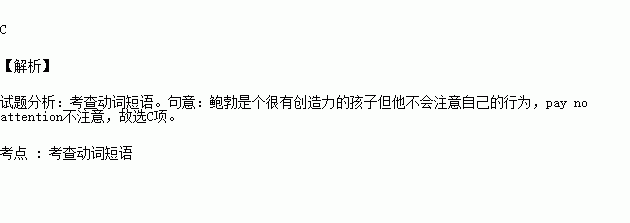题目内容
Paul could be a very attractive boy but he ______ to his behaviour.
A.paid no attention B.were paying no attention
C.pays no attention D.had paid no attention
练习册系列答案
相关题目
书面表达
生活中冲突时有发生。你班同学苏华和李江在上周篮球赛打篮球时发生争执,导致关系紧张。请你结合此事,并根据以下提示,用英语写一篇短文,向学校英文报“Happy Teens”专栏投稿。
简要描述事情的经过 | 打篮球、碰撞(bump into each other)、争执,等等 |
分析发生冲突的原因 | 1.遇事不够冷静 |
2.…太注重得失… | |
谈谈避免冲突的做法 | (请考生根据自己的经历或感想,提出至少两种做法) |
注意:
1.对所有要点逐一陈述,适当发挥,不要简单翻译。
2.词数100左右。开头已经写好,不计入总词数。
3.作文中不得提及有关考生个人身份的任何信息,如班级、人名等。
Conflicts with others are common in everyday life.
.
.
.
.
.
.

